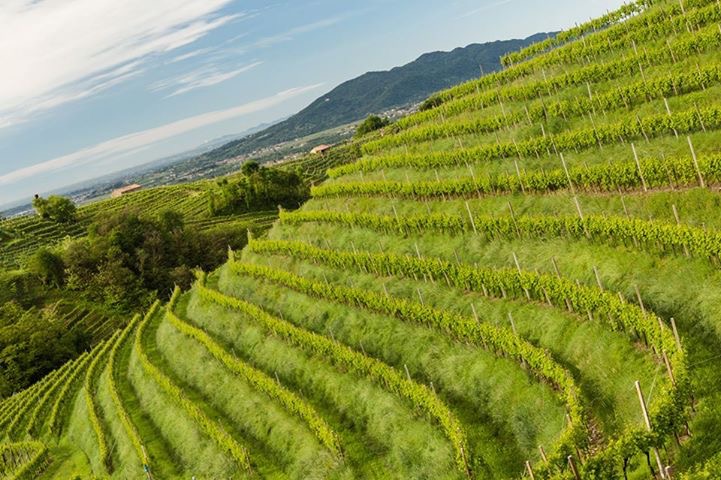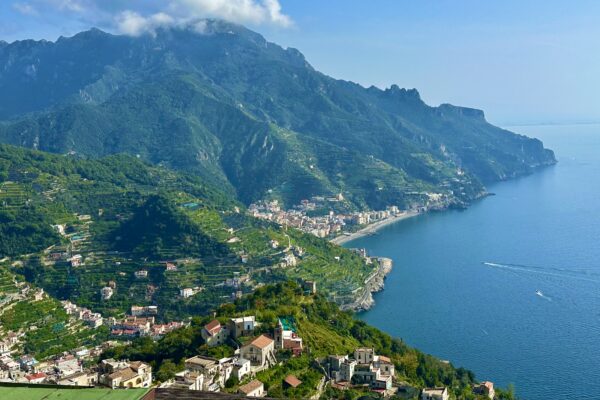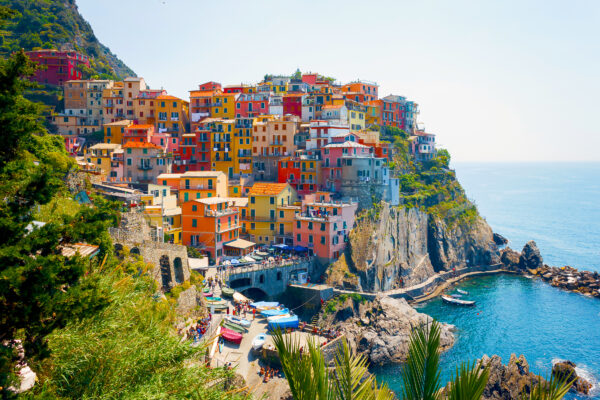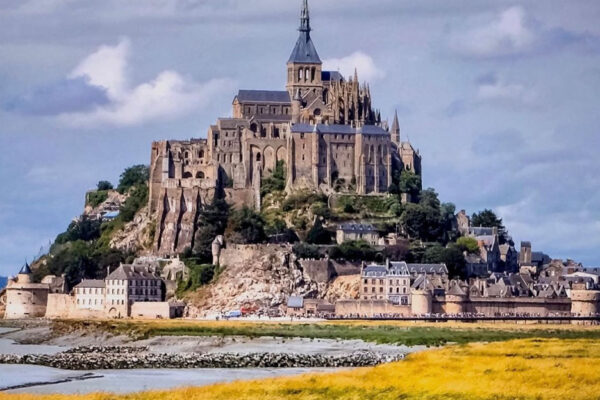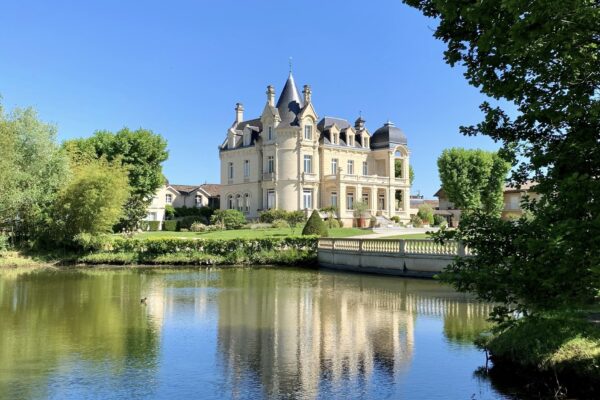Quest for a Lost Treasure: Venissa’s Dorona Grapes
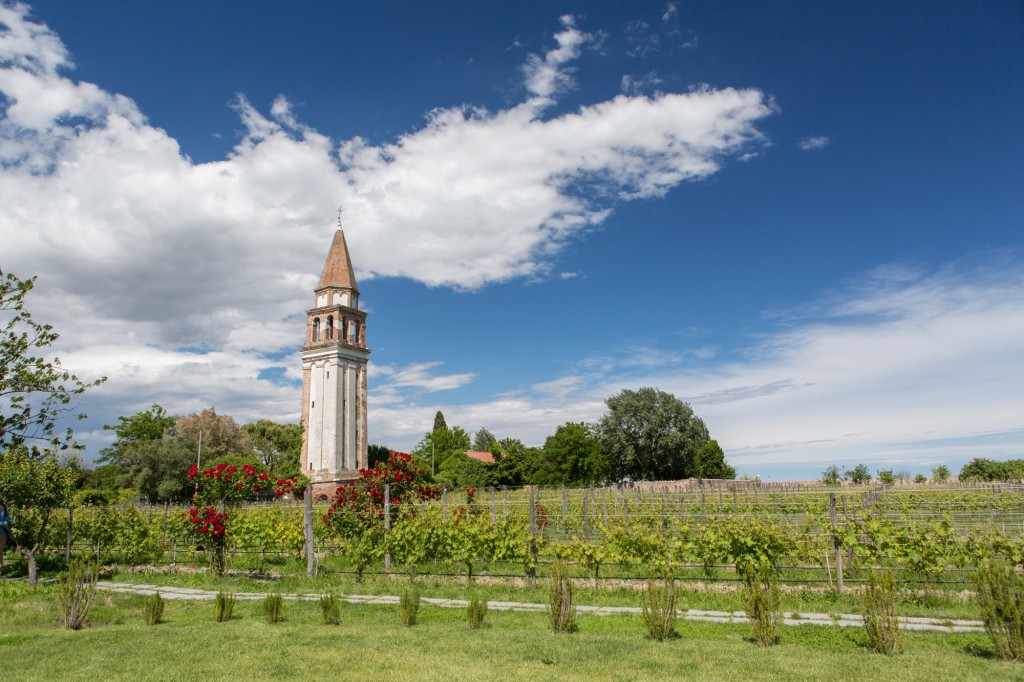
Venissa, an ancient vineyard in the middle of the Venetian Lagoon, was extinct until just a few years ago.
by Marla Norman
A vineyard in the middle of the Venetian Lagoon seems almost impossible to imagine. And yet, a good portion of Mazzorbo island is covered with grape vines used to produce a wine under the label Venissa. But the unlikely location is just the beginning of this remarkable venture. Venissa is an oenophilic detective story as riveting as any thriller.
The story begins when the inhabitants of the ancient Altino region took refuge in the lagoon islands to escape the Huns and other marauding tribes. The new islanders prospered and as their wealth grew, they built large estates, primarily in Burano.
In nearby Mazzorbo, Monks settled in and built a monastery with extensive gardens and a vineyard. There, they grew Dorona grapes, named for the extraordinarily unique golden fruit the vines produced. But by 1400, the monks had vanished. The monastery and gardens they had worked to develop were abandoned completely. All trace of the Dorona grapes and vines were lost.

Views of Burano and Mazzorbo, the site of Venissa. Photo courtesy of Venissa.
FINDING DORONA
Now, centuries later, the Bisol family has launched a project, in collaboration with the Venice City Government and Regional Department for Agriculture, to recover the traditional horticulture of the lagoon and, in particular, the Dorona grape. As producers of some of Italy’s most prestigious Proseccos, the family is especially qualified for the task. For over 500 years, the Bisol family have produced wine in the Cartizze hills of the Valdobbiadene area, located about an hour north of Venice. They cultivate over 370 acres of land and are one of the few families in Italy to actually own their property. The land is divided into 50 vineyards, that release an annual production of 500,000 bottles of Bisol Prosecco and 1,500,000 bottles of Jeio Prosecco.
After scouring the lagoon islands for over ten frustrating years, a few descendants of the ancient Dorona vines were finally located. These treasured plants were then painstakingly propagated and repropagated until eventually, a vineyard began to emerge — a precious two hectares, or almost 5 acres — of flourishing vines.
The day we visit Venissa, we cross over from Burano via a timber footbridge that connects the two islands. A small metal gate and simple plaque reading “Venissa” identify the property. Opening the gate, we find ourselves immediately in the vineyard. We walk down rows of grapes, admiring the luscious golden fruit hanging from the vines. An ancient-looking, slightly tilting bell tower stands guard over the vineyard — the last remnant of the Medieval monastery.

Vibrant gold, Venissa is velvety to the taste with a nose of wild flowers, peaches and a hint of fresh grass. Photo by Marla Norman.
THE VENISSA PROJECT
At the end of the vineyard is a sleek modern building with a large, open terrace — Venissa’s Michelin-star restaurant. We take a seat, eager to sample the wine and the menu, which uses ingredients from the garden adjacent to the vineyards and seafood from the lagoon.
Outstanding selections include: Risotto with Cockles & Leeks; Fig Ravioli with Goat Cheese & Herbs; Smoked Zucchini Flowers; Mackerel with Carcadé, Green Apple & Tarragon; Camomile Ice-Cream & Italian Lemon Meringue.
But first, the wine! A waiter brings over an exquisite looking bottle, with a label fashioned of pure gold leaf. The wine he pours is a match for the label — a stunning, vibrant gold. The nose smells of wild flowers and peaches with a hint of fresh grass. The taste is velvety, with more fruit, walnut, and balanced acidity for a full-flavored finish.
Matteo Bisol, winemaker and CEO for Venissa, joins us. He explains that the wine is fermented in glass and that the golden-colored skins are left for approximately 30 days to develop the color. The wine is then aged for two years. “Of course,” he adds, “the lagoon environment is essential to the flavor of the wine.”
“Also, we don’t need to use pesticides because salt is sprayed naturally, thanks to the wind and the salty environment of the lagoon. All of which helps to kill bacteria and diseases.”
Matteo continues, “Our first vintage was released in 2012.This was from the 2010 harvest and we produced 4,810 numbered bottles. In 2013, we released 3,911 bottles from the 2011 harvest. Today, our production remains at approximately 4,000 bottles annually.”
There is also a Venissa Rosso from 50-year old vines cultivated nearby on the Venetian Island of Santa Cristina. Predominantly Merlot, this Venissa tastes of violets and bramble up front, with licorice and salted chocolate on the back end. The Rosso also comes in a 500-ml bottle, which is hand-numbered and labeled in copper leaf.

Mateo Bisol, winemaker & CEO for Venissa with Michel & Marla
I ask about the beautifully designed bottle. Matteo explains that the bottles are created by the most celebrated glassmaker in Murano, Carlo Moretti. The gold leaf label is made by the Battiloro family, who have worked as goldsmiths in Venice’s Cannaregio district for over 1,000 years and are the only family in Europe who produce gold leaf by hand. The gold label is fused directly onto the bottle and then hand numbered. A new label will be designed each year.
“We are thrilled,” says Matteo, “that so many Venetian artisans wanted to be involved with the project. The name ‘Venissa’ comes from one of our greatest poets, Andrea Zanzotto.” Venissa is the name of a mythical figure, a daughter of the Roman emperor Claudius. Zanzotto used the name in a poem he wrote in the Veneto dialect, entitled Filò, composed for Fellini’s 1976 Casanova. As a tribute to Zanzotto, the logo for Venissa is an antique pen.

Bottles for Venissa are created by Carlo Moretti, the most celebrated glassmaker in Murano. A gold label is fused directly onto the bottle and then hand numbered. Photo courtesy of Venissa.
Matteo adds, “Venissa is much more than a wine. It is an hommage to the culture and heritage of Venice and to our special way of life here in the lagoon.”
We continue to sip the miraculous wine while sitting just a few feet away from the vineyards and gardens of Venissa. To be so close to the source of the food and drink heightens our entire experience in any number of ways. We’re grateful that Matteo has invited us to spend the night at the Venissa Resort (5 rooms only). So we can linger as long as we like enjoying the lovely tranquil views.
Later that evening, we cross over from Mazzorbo to Burano, after a glorious sunset. We mingle with locals, visit the shops specializing in lace-making, then cross back over. Venissa’s vineyards are in quiet repose, the city of Venice glows on the horizon, a dazzling beacon in the dark night. No words are adequate to describe the experience. We’re just very grateful to have lived this dream!

Late afternoon reflections on dreamy Mazzorbo lagoons. Photo courtesy of Venissa.


